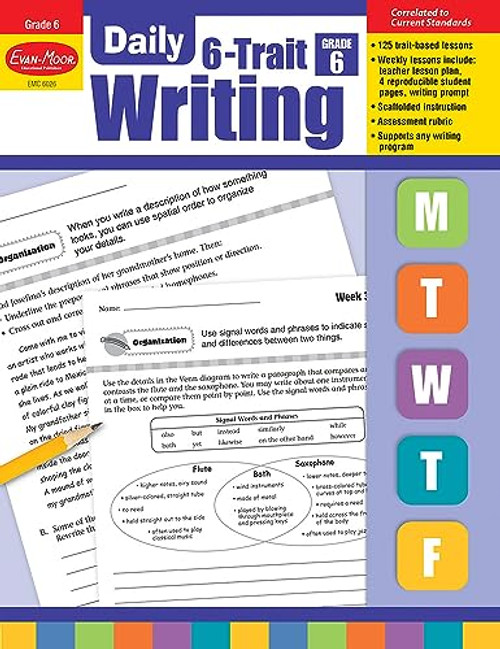Creating Writers: 6 Traits, Process, Workshop, and Literature, 6/e, truly puts the six traits of writing in context, showing how they are best taughtwithin writing workshop and as a way of enriching writing process by combining the elements of traits, literature, workshop, and process. Written by the pioneer of 6-trait writing, this edition organizes all materials by trait, features new one-page writing guides, and offers an increased emphasis on literature, connecting writing to reading as never before. It also provides a clear link between the six traits and the Common Core Standards for Writing and presents new lessons, engaging classroom activities, suggestions for using technology, and an expanded collection of student writing sure to promote lively discussions.
New to the Sixth Edition:
Easy-to-follow organizational design groups all papers, writing guides, literature, and lessons pertaining to a given trait in one chapter.
Expanded discussion of writing workshop and process (Chapter 2) shows how to teach the six writing traits within a meaningful context.
Increased emphasis on literature truly connects reading and writing with more titles, expanded annotations, and a list of exemplary trade books ideal for teaching informational writing.
New one-page writing guides simplify assessment, encourage self-evaluation, and display traits in a flexible yet consistent way across a variety of formats, including Teacher Writing Guides, Informational Writing Guides, Early Guides (for primary writers), and Leap-the-River Writing Guides for Students.
Improved collection of student writing samples includes over 80 exemplary samples that span a variety of grade levels, abilities, and genres (such as narrative, informational, and persuasive).
New lessons that emphasize modeling show teachers how and what to model (including many examples of revision).
Clear links between the six traits and the Common Core Standards for Writing provide teachers assurance that their instruction is in alignment with these standards.
An extensive discussion of technology (Chapter 8) expands our twenty-first century definition of writing to include communication forms like PowerPoint, audio, and video.
Revised chapter on quality assessment (Chapter 12) details ways to make both large-scale and classroom writing assessment more quality-driven, student-centered, and useful.
A closer look at genre (Chapter 9) examines Purpose and Audience, showing how and why genre might be considered an additional trait of successful writing.
Expanded interactive Questions & Activities expand teachers skills, stimulate their thinking, and build a strong sense of community when used in a study group or teacher preparation classroom.
New Author's Notes throughout the text speak directly to readers, citing additional resources, and suggesting lesson adaptations, book recommendations, and ways of differentiating instruction.











